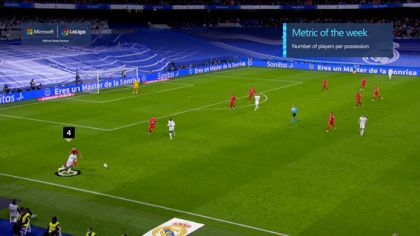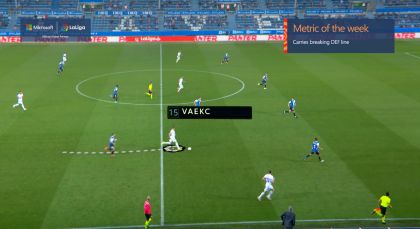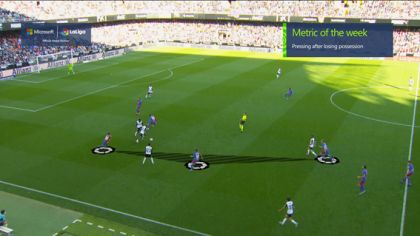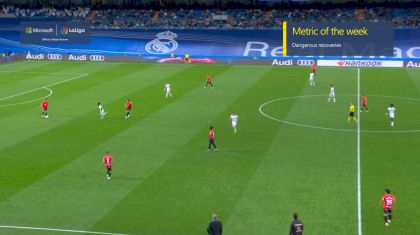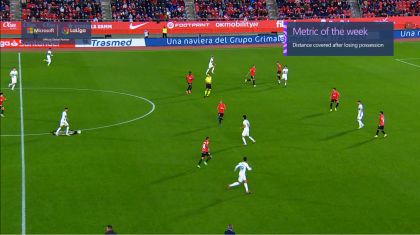LALIGA INSTITUTIONAL
Transparency
Pressroom
FUNDACIÓN LALIGA
Sponsors
Audiovisual rights
LALIGA Business school
Work with us
LALIGA WITH SPORT
Aficiones Unidas
LALIGA FC FUTURES
LALIGA Grassroots
Quality recoveries & build-up play that offers guarantees
This video illustrates how recoveries can be distinguished not only in terms of their effectiveness, but also their quality. Barcelona record the fourth-most advantageous recoveries in the league, i.e. situations that involve a numerical advantage and where the side in possession has more players ahead of the ball than the opposition.
Given the importance of build-up play in the system deployed by Xavi’s troops, the team’s set-up at the start of the attacking transition is key. This video shows how the Barcelona players react in these situations. It’s worth pointing out that 15% of the Catalan giants’ recoveries put them at an advantage.
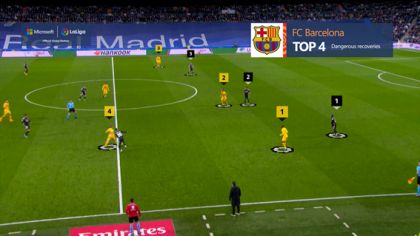
Madrid aim to advance up the pitch & prove their potency
Real Madrid are the LaLiga Santander front runners for the number of carries leading to shots, with four per game to their name. Carries can be analysed from a whole host of angles, but in this case we’re keen to look at their outcome, i.e. shots.
There’s no question that Ancelotti’s charges are capable of making the most of these actions, as illustrated in our Clip of the Week. The players’ ability to go past their man, their skill level and decision-making ability are key to the success of such actions, which can reap rich rewards for the capital club.
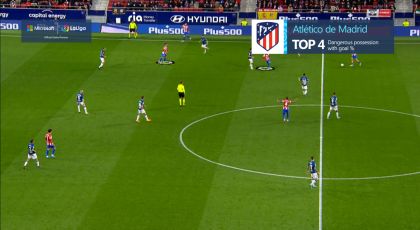
Atletico Madrid & their carries leading to shots
As we can see in this clip, Simeone’s boys post an average of two carries that lead to shots per game. Indeed, this is one of Atleti’s favourite tactics to pose a threat on goal. If we dive deeper and take a look at what the Wanda Metropolitano-based outfit do in possession, we learn that they feature amongst the league’s top five teams for the number of players per possession (almost three), whilst they find themselves amongst the division’s leading five teams for the number of dangerous possessions per match (4.6).
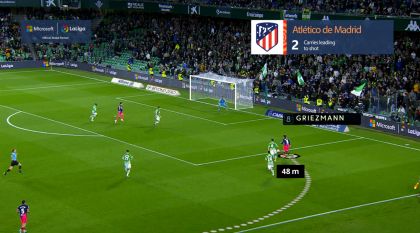
Betis & their breathtaking dangerous possessions
When it comes to possession, there are a whole host of aspects that we can analyse, with one of them being the degree of danger created. When we speak of dangerous possessions, we’re referring to those that end in a goal or a goalscoring opportunity. This video features a dangerous possession put together by Manuel Pellegrini’s charges. Betis excel in this department and lie second in the LaLiga standings for the number of dangerous possessions (5.7 per outing).
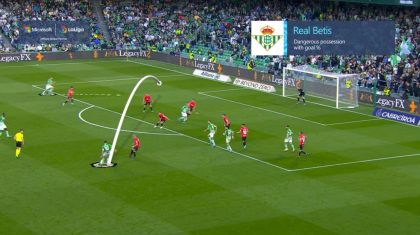
Dangerous possessions that result in goalscoring chances
The Real Madrid players ensure that their team balance enables them to consistently produce and improve on their statistics as the games goes on. As we can see in the latest instalment of Clip of the Week, the Blancos record more dangerous possessions than any other side in the league (6.76 per game) and, crucially, they make them count.
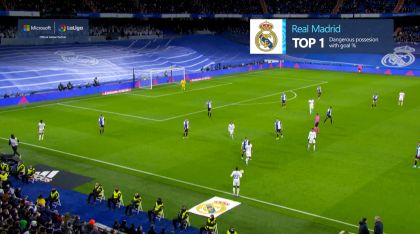
It’s your Game
Matchday 23
RCD Mallorca
Cádiz CF
SAT 05.02.2022
15:15
Season 2021/2022
Estadi Mallorca Son Moix
CA Osasuna
Sevilla FC
SAT 05.02.2022
20:00
Season 2021/2022
Estadio El Sadar
FC Barcelona
Atlético de Madrid
SUN 06.02.2022
15:15
Season 2021/2022
Spotify Camp Nou
Real Madrid
Granada CF
SUN 06.02.2022
20:00
Season 2021/2022
Estadio Santiago Bernabéu
CA Osasuna
Sevilla FC
SAT 05.02.2022
20:00
Season 2021/2022
Matchday 23
Estadio El Sadar
Arrasate takes fast route to success
As this video illustrates, each of Osasuna’s passes beat a high number of opponents (over three), a return that puts the Pamplona-based outfit in second place in the league charts in this department. Jogoba Arrasate’s charges also excel in the fitness stakes. Only two other teams cover more distance than the Navarrans, whilst they record an impressive fifth place for distances covered at over 21km/hr.
If there’s one area of the game where Sevilla are turning heads it would have to be their defensive resolve. The Nervion-based side boast the league’s meanest defence, conceding an average of 0.7 goals per game. What’s more, Julen Lopetegui’s troops lie top of the class when it comes to overall positional width and boast the third-best figures for depth in the Spanish top flight.
Sevilla’s intricate possession play
Sevilla lie third in the league table for the number of players involved per possession (over 3.3). In addition to the positional criteria outlined above, when in possession, Lopetegui’s men occupy a larger area than any other side in the league (1,125m²).
Meanwhile, Osasuna lead the way in the LaLiga Santander standings for the number of double-pressure passes played per game (14.27). These are passes in which both the passer and receiver are under pressure.
PLAYER FOCUS
Papu Gomez’s calculated risks
Papu Gomez has registered a pass success rate of over 85%, a return that sees him feature amongst the top five in the Sevilla ranks. The Argentine also performs well at league level when it comes to his success on long balls, where his 70% return places him amongst the division’s top 15 performers. He is involved in more carries that lead to shots than any of his Sevilla teammates and features in second spot in the team charts for attacking threat, with 27.7% of his passes made in the final third.

